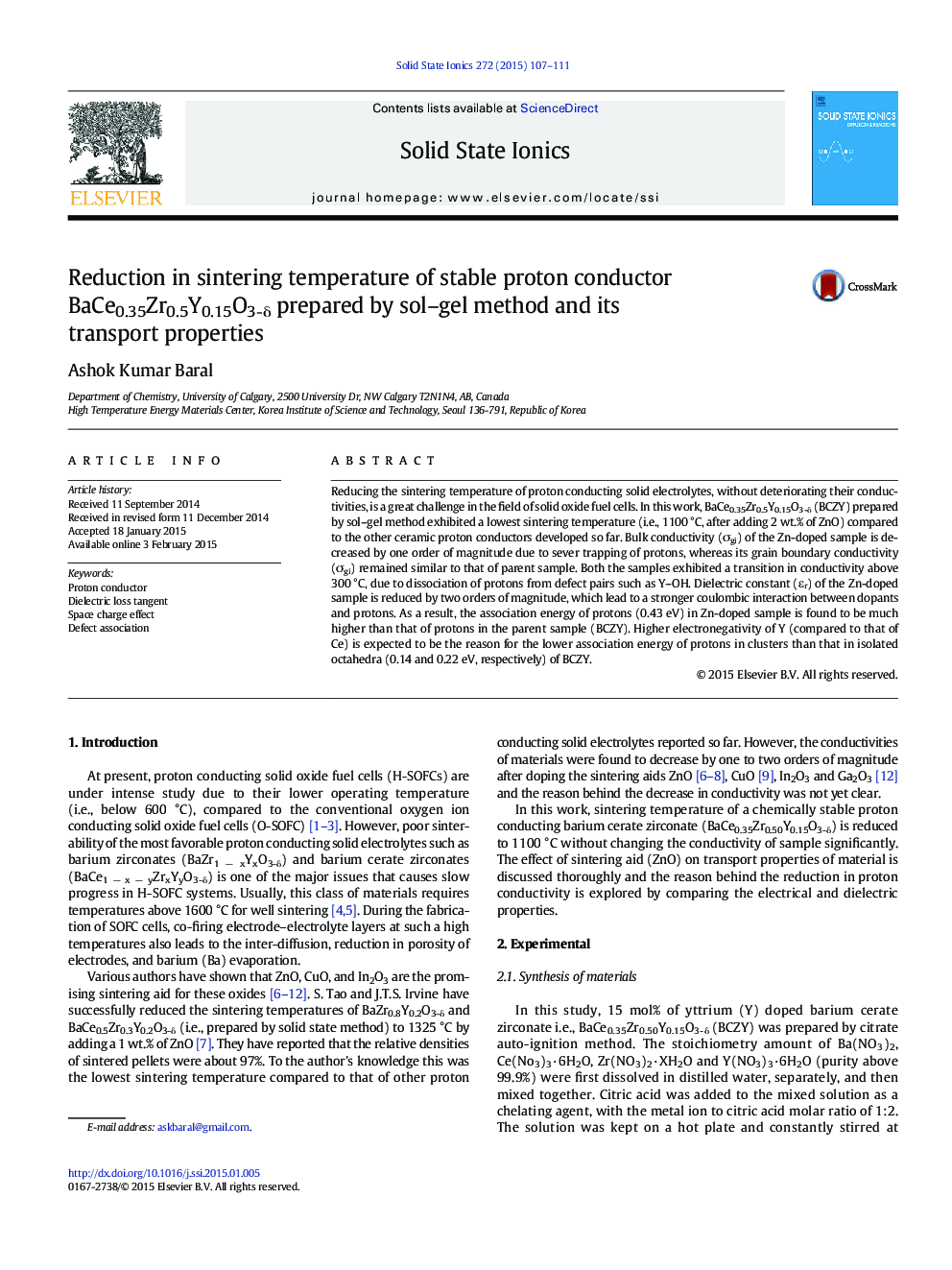| کد مقاله | کد نشریه | سال انتشار | مقاله انگلیسی | نسخه تمام متن |
|---|---|---|---|---|
| 1296327 | 1498271 | 2015 | 5 صفحه PDF | دانلود رایگان |

• Sintering temperature of ceramic proton conductor BaCe0.35Zr0.5Y0.15O3-δ reduced to 1100 °C.
• The value of σgi in Zn-doped sample is decreased by one order of magnitude without significant change in the value of σgb.
• Grain boundary space charge effect and defect association of protons are studied through the dielectric loss tangent.
• Open doping Zn, dielectric constant decreased by two order of magnitude that lead to a stronger association energy of proton.
Reducing the sintering temperature of proton conducting solid electrolytes, without deteriorating their conductivities, is a great challenge in the field of solid oxide fuel cells. In this work, BaCe0.35Zr0.5Y0.15O3 -δ (BCZY) prepared by sol–gel method exhibited a lowest sintering temperature (i.e., 1100 °C, after adding 2 wt.% of ZnO) compared to the other ceramic proton conductors developed so far. Bulk conductivity (σgi) of the Zn-doped sample is decreased by one order of magnitude due to sever trapping of protons, whereas its grain boundary conductivity (σgi) remained similar to that of parent sample. Both the samples exhibited a transition in conductivity above 300 °C, due to dissociation of protons from defect pairs such as Y–OH. Dielectric constant (εr) of the Zn-doped sample is reduced by two orders of magnitude, which lead to a stronger coulombic interaction between dopants and protons. As a result, the association energy of protons (0.43 eV) in Zn-doped sample is found to be much higher than that of protons in the parent sample (BCZY). Higher electronegativity of Y (compared to that of Ce) is expected to be the reason for the lower association energy of protons in clusters than that in isolated octahedra (0.14 and 0.22 eV, respectively) of BCZY.
Journal: Solid State Ionics - Volume 272, April 2015, Pages 107–111